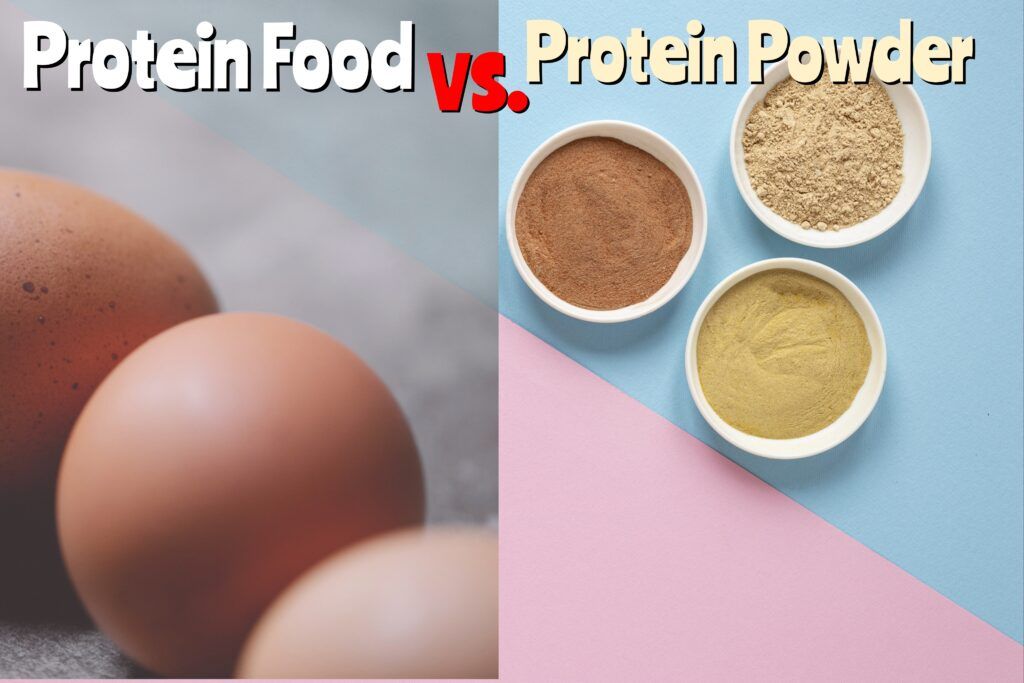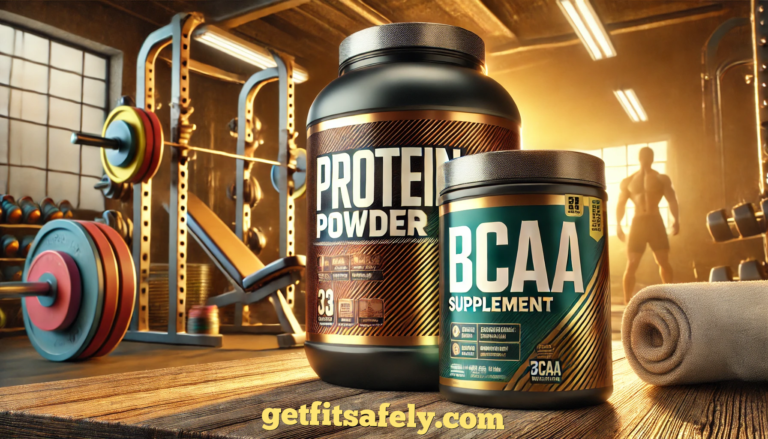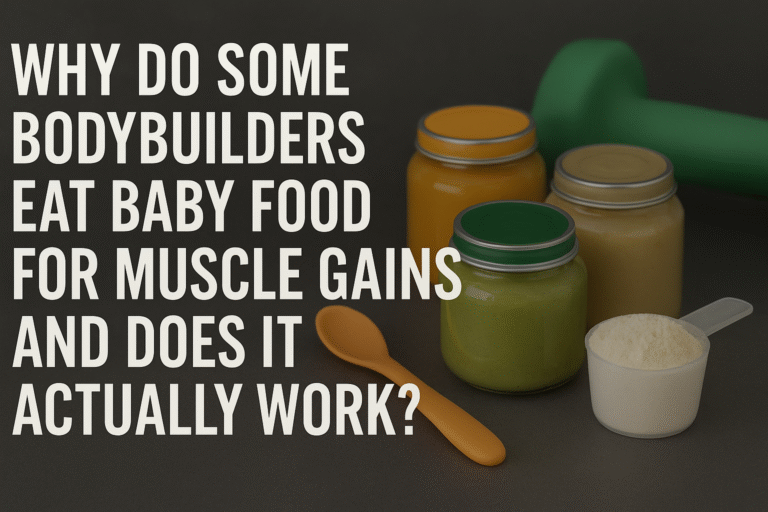Protein goes beyond trendy talk at gyms; it’s a cornerstone of muscle recovery and growth post-exercise.
For athletes and fitness enthusiasts alike, understanding the role of protein can significantly enhance physical health and performance over time.
In this discussion, we’ll dive into why protein is so vital after you’ve hit the gym.
We’ll weigh the benefits and drawbacks of sourcing your protein from foods versus supplements.
The Role of Protein in Exercise
During physical activity, protein is the key player in muscle growth and repair.
Think of those microscopic tears from training as opportunities for protein to step in, healing and strengthening your muscles.
But its benefits don’t stop there.
Protein also helps in preserving lean muscle, especially crucial during weight loss, ensuring you’re shedding fat, not muscle.
Plus, it’s a hunger buster.
By making you feel full longer, protein is a valuable tool for managing appetite and maintaining a healthy weight.
|
Protein is essential for growth, repair of cells and tissues, and metabolic activities. Animal sources are considered complete proteins while plant sources are incomplete. People who engage in intense training require more protein (1.4-2 g/kg/day) which can be obtained through a varied diet, but protein supplements before, during, or after exercise can enhance recovery and immune function. Adequate protein intake and timing can benefit various types of exercise. (Pubmed/20048505) |
Protein from Food: Advantages and Disadvantages
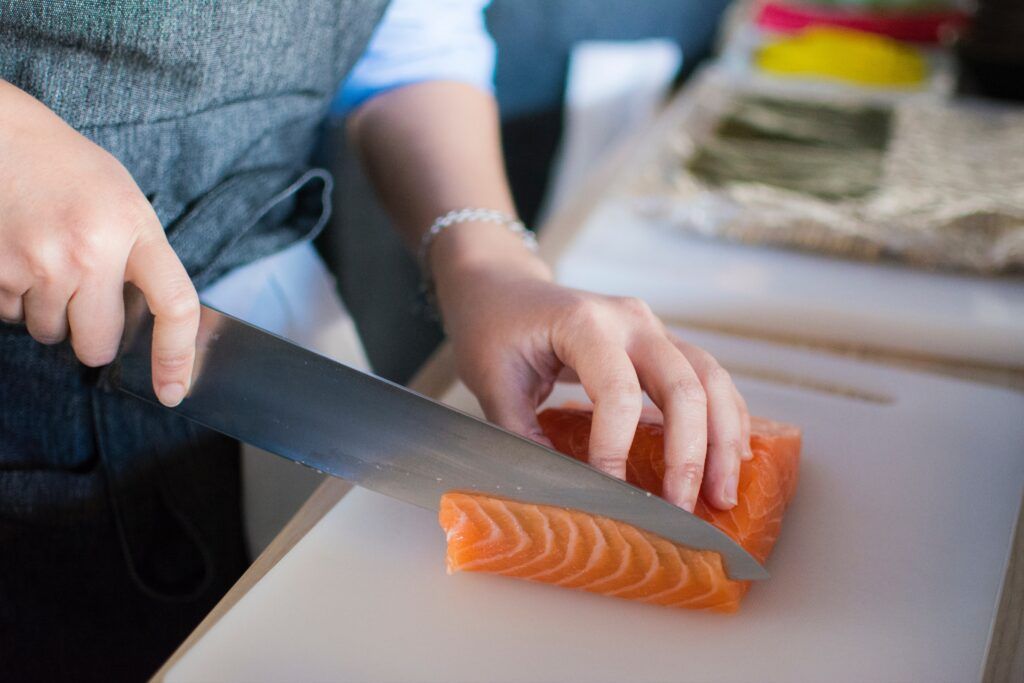
Choosing the right protein source—food or powder—can greatly influence your recovery and muscle growth.
Food-based protein comes packed with a full spectrum of amino acids and boasts a high biological value, meaning your body can use it efficiently.
Plus, it delivers a plethora of other nutrients that benefit overall health.
However, there are drawbacks.
Preparing protein-rich foods can be time-consuming, and some individuals may find it challenging to digest protein right after exercising.
Advantages
Natural Protein Sources:
Food proteins come from natural sources like meat, fish, dairy, eggs, legumes, and nuts. They offer a broad spectrum of both essential and non-essential amino acids, crucial for muscle growth and maintenance.
Digestibility and Absorption Time:
Food proteins have different absorption and digestion times depending on the source and composition of the meal. In general, animal proteins are digested more quickly than plant proteins.
However, some sources of protein-rich foods, such as red meat and legumes, may be more difficult to digest for some people, causing bloating or gastrointestinal discomfort.
Biological Value of Proteins:
The biological value of proteins refers to the quality and utilization of proteins by the body. Animal proteins, such as those found in meat, fish, and dairy, generally have a higher biological value than plant proteins. This means that they are absorbed and utilized more efficiently by the body for protein synthesis and muscle repair.
Nutritional Variety and Personal Preferences:
Consuming proteins from food sources allows for a greater variety of nutrients to be introduced into the diet, including vitamins, minerals, and fiber. This can contribute to a more balanced and sustainable diet over time. Additionally, food proteins can satisfy different taste and texture preferences, making protein intake after exercise more enjoyable.
Cost of Food Protein Sources:
The cost of food proteins can vary depending on the source and quality of the product. In general, animal proteins tend to be more expensive than plant proteins. However, it is possible to find economical and nutrient-dense protein sources in both the animal and plant kingdom, such as lentils, beans, eggs, and chicken.
|
Jumping into plant proteins, we’re not just talking about a vital part of our diets; it’s about tapping into their hidden medicinal powers with biotech tools. Each protein brings something special to the table – think unique amino acids, size, and charge. Now, let’s get into the nitty-gritty: using techniques like salting out to play with protein solubility and chromatography for sorting proteins based on their unique properties. After isolating these proteins, mass spectrometry steps in to reveal their structures and how they work. This dive into plant protein extraction walks you through where these proteins come from, how to pull them out, clean them up, and figure out what makes them tick, using methods like SDS gel electrophoresis. For anyone interested in the science behind nutrition and biotech’s role in harnessing plant protein, there’s a lot to get excited about. (Pubmed/3841988) |
Disadvantages
Preparation and storage time:
Unlike protein powder, protein-rich foods often require longer and more careful preparation, such as cooking and appropriate storage. This can be less practical for those with limited time or for those who want a quick and simple post-workout meal.
Variation in nutritional composition:
The nutritional composition of foods varies depending on quality, origin, and preparation method. This can make it difficult to accurately assess the intake of protein and other nutrients in a particular meal.
Possible allergies or intolerances:
Protein-rich foods can cause allergies or intolerances in some people, such as egg allergy or lactose intolerance. In these cases, you should resort to an alternative protein source or specific supplements.
Delay in protein absorption:
In some cases, the absorption of protein from food may be slower than protein powder, especially if the meal is high in fat and fiber. This can delay the process of muscle recovery after exercise.
|
Protein is crucial for repairing and maintaining body tissues, and it is composed of amino acids. There are 20 amino acids, 11 of which can be produced by the body, while the other 9, called essential amino acids, must be obtained through diet. Protein absorption is limited, so it is essential to spread protein intake throughout the day, with a maximum of 0.55 grams per kilogram per meal. To calculate protein needs, consider factors like age, activity level, and goals. Generally, 20-25% of daily calories should come from protein, but this can vary depending on individual needs. |
Protein powder: advantages and disadvantages
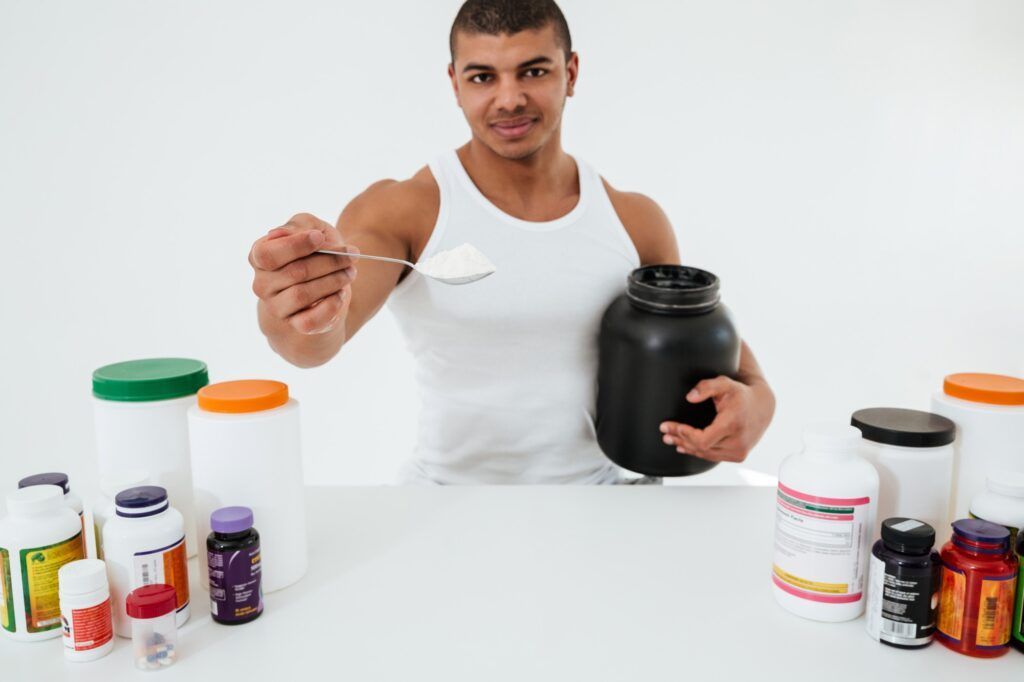
Protein powders have surged in popularity as a go-to alternative to whole protein sources, thanks to their convenience and adaptability to individual preferences and dietary needs.
Yet, like anything, they come with their own set of trade-offs.
Let’s dive into the pros and cons of incorporating protein powders into your diet, taking into account the variety on offer, their ease of use, how our bodies take them in, and the price tag attached.
Advantages
There are different types of protein powders:
Protein powders are available in various forms, including whey, casein, and plant-based proteins (such as peas, rice, and hemp).
Each type has a different amino acid profile, absorption rate, and digestibility, which can affect the product’s effectiveness in promoting muscle recovery and growth.
Additionally, protein powders are available in different flavors and formulations, allowing individuals to find the one that best suits their preferences.
Convenience and speed of preparation:
One of the main advantages of protein powders is convenience. They are easy to transport, require little preparation time, and can be consumed quickly after a workout. This makes them ideal for those with limited time or who are looking for a simple and fast solution for post-workout protein intake.
Absorption and digestion:
Protein powders, particularly those based on whey, are known to be rapidly digested and absorbed. This can promote faster muscle recovery and increased protein synthesis compared to many food sources of protein.
Maximizing Protein Powder AbsorptionBoosting your protein powder’s effectiveness is simpler than you think. Slip in some bromelain, that enzyme magic from the tropics, to amp up digestion and absorption. Mix up your meal game with goodies like onions, garlic, lemon, and apple cider vinegar to fire up stomach acid production, setting the stage for smoother digestion. Choosing your protein powder? Go easy on your stomach with picks like brown rice or egg white protein. If dairy’s your thing, whey is the clear winner over casein for fast absorption. Before you dive into these tweaks, though, have a chat with your doctor to make sure they fit just right with your health goals. |
Customization and integration with other nutrients:
Protein powders allow for easy customization and can be combined with other nutrients, such as carbohydrates and fats, to create a balanced post-workout meal.
Additionally, it is possible to choose from different formulations and flavors to meet one’s nutritional needs and preferences.
|
COST OF PROTEIN POWDER PRODUCTS : The cost of protein powders can vary depending on the brand, quality, and type of protein. In some cases, protein powders can be more expensive than food sources of protein, especially if one chooses a high-quality product or one with specific ingredients. However, it is possible to find affordable options that offer good value for the money. |
Disadvantages
Nutritional incompleteness:
Compared to protein from food sources, protein powders usually offer fewer micronutrients, like vitamins and minerals. Relying too much on protein supplements might lead to missing out on the benefits of a varied and balanced diet.
Taste and texture:
Some people may not enjoy the taste or texture of protein powders. Even though there are many flavors and formulations available, a preference for the taste and texture of whole foods can make the consumption of protein powders less enjoyable.
Possible additives and allergyns:
Protein powders may contain additives, artificial sweeteners, or preservatives that may not be desirable or cause adverse reactions in some people. In addition, some protein powders, such as those based on milk, may contain common allergens.
Environmental impact:
The production of protein supplements can have a greater environmental impact than the production of protein from whole foods, due to the extraction and processing of ingredients. Moreover, packaging and production waste can contribute to the production of waste.
Quality control and safety:
The quality and safety of protein powders vary depending on the manufacturer and regulations in the country of production. Some protein supplements may contain undeclared ingredients or contaminants, such as heavy metals or doping substances, which can be harmful to health. Therefore, it is important to choose reliable products and test them from trusted sources.
Protein Powder: Risks and ConsiderationsProtein powders are a popular way to increase protein intake, but they come with risks. The FDA doesn’t regulate them, and some powders may contain harmful additives, like heavy metals or pesticides. Additionally, some powders have high levels of added sugars and calories, which can lead to weight gain and blood sugar spikes. People with dairy allergies may also experience digestive distress. Registered dietitian Kathy McManus recommends caution when using protein powders, and only using them under supervision in certain instances. (Harvard: The hidden dangers of protein powders) |
Types of Protein Powder on the Market
There are several types of protein powders available on the market. Below are some of the most common types:
Whey protein: also known as whey protein, is a fast-absorbing and complete protein source derived from whey.
(They represent about 20% of the protein in milk and are isolated from whey during the protein powder production process.)
Whey protein is rich in essential amino acids, including BCAAs, which are important for muscle building and recovery after exercise.
Additionally, they are easily digestible and can be taken quickly after exercise to provide the muscles with the necessary amino acids for protein synthesis and muscle recovery.
This type of protein is available in various forms, including concentrates, isolates, and hydrolysates, depending on the amount of protein and fat present.
Casein protein: is a slow-absorbing protein source derived from milk. Casein represents about 80% of the protein in milk and is separated from whey during the production process of protein powders.
Casein proteins are known for their slow release of amino acids, making them an ideal choice for nighttime recovery and long-term muscle protection.
Moreover, they are rich in glutamine, an amino acid that supports the immune system and promotes muscle recovery.
Plant-based proteins: as the name suggests, plant-based proteins are protein sources derived from plant sources, such as beans, peas, soy, quinoa, hemp seeds, chia seeds, and other plant sources.
They are also often used as an alternative to animal proteins, especially for those with food intolerances or who follow a vegan or vegetarian diet.
This choice of protein supplements is often considered healthier than animal proteins, as they are generally low in saturated fat and cholesterol and rich in fiber, vitamins, and minerals.
Additionally, plant-based proteins can offer a wide range of essential amino acids if properly combined.
Soy is one of the most popular plant-based protein sources and is considered a complete protein because it contains all the essential amino acids necessary for the body.
Other plant-based protein sources such as beans and peas can be combined to create a complete amino acid profile.
Plant-based proteins can be used for a variety of purposes, such as muscle building, post-workout recovery, and weight loss.
| Plant-based proteins are produced in various ways, including organic and sustainable methods, but it is important to choose high-quality plant-based protein producers who use organic, sustainable, and natural ingredient sources. |
Meat proteins: They are derived from animal-based protein sources that are rich in essential amino acids and beneficial nutrients for health.
Meat proteins are extracted from various parts of animals such as beef, pork, chicken, and lamb.
They are often used as a protein supplement by bodybuilders, athletes, and people looking to increase their protein intake in their diet.
Meat proteins are quickly absorbed, making them an excellent source of protein for muscle recovery and building.
However, they can also contain saturated fats and cholesterol and therefore may be less healthy than other protein sources such as whey proteins or plant-based proteins.
Meat proteins can be used as an alternative to whey proteins for those who are lactose intolerant or following a low-carbohydrate diet.
However, it is important to choose high-quality meat proteins from sustainably raised and adequately fed livestock.
Egg proteins: they are a high-quality protein source, full of beneficial nutrients and essential amino acids crucial for muscle building
They are extracted from egg whites, which mainly contain protein, while the yolk contains fats and other nutrients.
They are also easily digestible, making them an excellent source of protein for those with digestive problems or food intolerances.
This protein supplement is often used by bodybuilders, athletes, and people looking to increase their protein intake in their diet because it helps increase muscle mass, improve post-workout recovery, and promote overall health.
Egg proteins are often used as an alternative to whey proteins for those who are lactose intolerant or following a vegan diet.
However, people with egg allergies should avoid this type of protein.
Protein blends: They are a combination of different protein sources, such as whey proteins, casein proteins, plant-based proteins, and other proteins, to create a complete amino acid profile.
This combination helps provide a high-quality protein source that contains all the essential amino acids needed by the body.
Protein blends are often used as a way to combine the unique characteristics of different protein sources into a single product.
For example, whey proteins are quickly absorbed, while casein proteins are slowly absorbed.
In addition, protein blends can be used to provide a protein source that contains both animal and plant-based proteins, offering a wider range of nutrients and health benefits.
Plant-based proteins are often free from lactose and gluten, which can be problematic for some people.
This type of supplement can be used for a variety of purposes, such as muscle building, post-workout recovery, weight loss, and overall health.
Chocolate, vanilla, and other flavored protein powders: If you are someone who wants to incorporate protein into their diet without sacrificing taste, these proteins are for you!
These are formulations that have a sweet and pleasant taste, such as chocolate, vanilla, strawberry, and other flavors.
Chocolate, vanilla, and other flavored protein powders are often made with different types of proteins, including whey protein, and plant-based proteins like peas, rice, hemp, soy protein, and other proteins.
Natural or artificial sweeteners are often used to make the taste sweeter.
Flavored protein powders are typically used to make protein shakes, pancakes, protein bars, and other protein-rich recipes.
Organic and certified protein powders: These are suitable for those who are looking to consume organic and sustainable food products.
They are formulated with organic ingredients that are grown without the use of pesticides and chemical fertilizers and are cultivated and produced by organic regulations.
Organic protein powders may use organic plant-based proteins like pea, rice, hemp, and soy protein, or organic animal-based proteins like organic eggs or organic milk.
Other natural and organic ingredients may be used to provide sweetness or flavor to the product, such as natural sweeteners or organic flavors.
Organic and certified protein powders are produced in certified organic facilities and adhere to strict organic production standards.
Additionally, they are often subjected to third-party testing to ensure their compliance with organic regulations.
Natural and sustainable ingredient-based protein powders: These are derived from natural and sustainable ingredients, such as plant-based proteins and other organic ingredients.
These proteins are often suitable for those who are looking to reduce the environmental impact of their food purchases and prefer to consume products made from natural and organic ingredients.
Natural ingredient-based protein powders include plant-based proteins like pea, rice, hemp, and soy protein, which are derived from natural plant sources.
However, other natural ingredients such as fruit and vegetable powders, spices, and natural sweeteners may also be added.
They are typically packaged in biodegradable or recyclable packaging, contributing to the reduction of the environmental impact of production and distribution.
|
Natural and sustainable ingredient-based protein powders focus on natural and sustainable ingredients, such as plant-based proteins, and natural ingredients like fruit and vegetable powders. Not all ingredients are necessarily organic, but they are chosen with sustainability in mind. On the other hand, organic and certified protein powders are produced using only organic ingredients, grown without the use of pesticides and chemical fertilizers, and produced by organic regulations. |
Protein powders without gluten and suitable for those with intolerances: are formulated to provide a high-quality source of protein without gluten and other common allergens such as milk, soy, and eggs.
This type of supplement is useful for those who have food intolerances or sensitivities to gluten and other allergens.
Gluten-free protein powders use ingredients such as plant-based proteins like pea, rice, and hemp protein, which are naturally gluten-free.
In addition, other natural ingredients can be used to provide sweetness or flavor to the product, such as natural sweeteners or natural flavors.
Sugar-free protein powders with low carbohydrate content: are derived from a high-quality source of protein without added sugar and with a low carbohydrate content.
This type of protein is effective for those who are looking to limit their sugar and carbohydrate intake in their diet, such as those following a ketogenic or low-carbohydrate diet.
Sugar-free protein powders can use low-calorie natural sweeteners, such as stevia, to add sweetness to the product without increasing sugar intake.
Additionally, the low carbohydrate content in this type of protein powder may result from the use of fast-absorbing proteins such as whey protein, which is naturally low in carbohydrates.
Protein powders with added vitamins, minerals, and antioxidants: provide a high-quality source of protein along with a mix of important nutrients for overall health.
The added vitamins and minerals may vary depending on the product but often include vitamin C, vitamin E, B-group vitamins, calcium, magnesium, and zinc.
These nutrients can help support immune system health, bone health, muscle function, and energy metabolism.
In addition, protein powders with added antioxidants such as vitamin C, vitamin E, and selenium help fight free radicals, which are responsible for cell damage and premature aging.
Protein powders for weight loss: help reduce body fat and increase lean muscle mass.
These proteins are often low in carbohydrates and fats and high in protein, which helps maintain satiety and promotes weight loss.
Some types are enriched with other ingredients that promote weight loss, such as soluble fiber or thermogenic ingredients, which increase metabolism and help burn more calories.
However, it is important to note that consuming protein powder alone does not necessarily lead to weight loss but should be combined with a balanced diet and regular exercise.
Protein powders for post-workout recovery: this type of protein is specifically formulated to help the body recover and repair muscle tissue after intense physical exercise.
Although they contain the same essential amino acids as other protein powders, they are often formulated with a mix of essential amino acids, including branched-chain amino acids (BCAA) and glutamine, which help reduce muscle damage and promote muscle recovery.
In addition, protein powders for post-workout recovery are usually formulated for rapid assimilation and to ensure the rapid availability of essential amino acids to the body.
Protein from food vs. powder: Which one to choose?
Deciding between protein from food and protein powder involves weighing various factors to see what best fits your lifestyle, goals, and dietary needs.
Here are some key considerations to help guide your choice:
Individual goals:
Depending on your personal goals, such as building muscle mass, weight loss, or recovery, you may find one type of protein more suitable than the other. For example, protein powder may be more appropriate for those seeking quick recovery after a workout.
Diet and dietary restrictions:
If you follow a specific diet, such as veganism, or have food intolerances or allergies, you may need to choose between different protein sources or opt for specific supplements.
Personal preferences and tastes:
Your preferences in terms of taste, texture, and variety can influence your choice between protein from food and protein powder. If you love cooking and trying new dishes, you may prefer protein from food, while if you are looking for a quick and practical solution, protein powder may be more suitable.
Budget and availability of protein sources:
Your budget and the availability of protein sources in your area can influence your choice. If protein powder is too expensive or difficult to find, you may opt for more accessible protein sources from food.
Time available for meal preparation:
If you have little time to prepare meals or prefer practical solutions, protein powder may be a better choice. However, if you have time to cook and appreciate homemade meals, protein from food may be more suitable for your needs.
Some Post-workout Protein Ideas: Meals and Snacks for Every Need
Balanced post-workout meal:
- Grilled chicken breast with quinoa and mixed vegetables
- Baked salmon with sweet potatoes and broccoli
- Tofu and brown rice bowl with sautéed veggies (vegan option)
Quick protein snack:
- Protein smoothie with almond milk, protein powder, fruit, and spinach
- Greek yogurt with honey and nuts
- Boiled edamame sprinkled with sea salt (vegan option)
Light and protein-packed snack:
- Carrot sticks and hummus
- Turkey slices rolled with avocado
- Whole grain crackers with vegan cream cheese (vegan option)
High-protein portable snack:
- Protein bar
- Mixed nuts and dried fruit
- Dehydrated soy bites (vegan option)
Incorporating proteins at different times of the day supports muscle development and recovery.
The amount and type needed can vary depending on individual fitness goals.
It’s common for gym-goers to ingest protein at specific moments:
Pre-workout: Protein intake before exercise delivers the necessary energy and nutrients to sustain the workout and inhibit muscle degradation. Opt for digestible sources such as whey protein, available in powder or liquid form for quick absorption.
Post-workout: Proteins consumed post-workout assist in mending muscle tissues damaged during exercise and foster muscle growth. Whey protein, being quickly absorbed and easily digested, is often the preferred option.
Bedtime: Protein supplements taken before sleep curtail muscle breakdown during sleep and facilitate overnight recovery. Slow-release casein protein is frequently used for this purpose.
Snacks: Protein-rich snacks like eggs, Greek yogurt, nuts, and seeds maintain fullness, warding off hunger throughout the day.
To maximize results, seeking personalized advice from a nutritionist or personal trainer on one’s diet and workout is highly advised.
Protein in the morningConsuming protein in the morning can be a good option to provide the body with the energy and nutrients necessary for exercise and prevent muscle breakdown. Many experts recommend consuming protein at breakfast to provide the body with a proper start to the day. Whey protein can be a good choice in the morning as it is quickly absorbed and easily digested. An alternative is to eat protein-rich foods such as eggs, Greek yogurt, lean meat, or tofu to provide the body with an adequate source of protein. |
Vegetable Proteins: Natural Sources and Nutrients for a Balanced Diet
You can rack up as much protein from plant-based whole foods—think legumes, nuts, seeds, veggies, and grains—as you would from protein powder supplements.
It’s all about what you pick and how much you pile on your plate.
Take a cup of cooked chickpeas; you’re looking at about 15 grams of protein.
Sprinkle a quarter cup of pumpkin seeds onto your salad, and boom, another 8 grams.
Even a cup of cooked spinach gets you about 5 grams.
These whole foods are also loaded with essential micronutrients—vitamins, minerals, fiber—that you might not get from protein powders.
How much protein should you consume for optimal muscle growth?
The protein puzzle for muscle growth isn’t one-size-fits-all.
It varies depending on your body weight, level of activity, and your specific goals
Typically, the word on the street (or in the gym) is to aim for about 1.6-2.2 grams of protein per kilogram of body weight each day.
This is your sweet spot for waking up those muscle proteins and getting them to bulk up.
So, if you weigh around 70 kg, you’re looking at needing between 112 and 154 grams of protein daily.
But here’s the catch: loading up on more protein than this doesn’t automatically mean your muscles will swell up bigger.
Overdo it, and you might just see your weight creeping up, but not in the way you want.
Figuring out your perfect protein intake isn’t a solo journey.
It’s a smart move to talk to a dietitian or a personal trainer.
They can tailor your protein needs to your body’s specifics, helping you hit your muscle growth goals without overstepping into excess.
Final Thoughts
FAQs
What is the best protein powder supplement?
There is no universal “best” protein powder supplement. The choice of the most suitable supplement depends on many personal factors such as age, gender, body weight, level of physical activity, and specific goals.
Can you drink a protein shake before the main meals?
Yes, you can drink a protein shake before the main meals. It may help you feel fuller and eat less during your meal, which can aid in weight loss. However, it’s important to choose a protein shake that is low in added sugars and calories and not rely solely on protein shakes for your nutritional needs. It’s best to use them as a supplement to a balanced and varied diet.
When to drink protein shakes after a workout?
After a workout, the timing for taking a protein shake can vary depending on the individual and the intensity of the workout. However, generally, it’s recommended to take a protein shake within 20-30 minutes of the workout to maximize muscle protein synthesis and promote recovery.
How to take protein powder for weight loss?
Protein powder can be a helpful tool for weight loss, as it helps to keep you feeling full and satisfied while reducing calorie intake. To use protein powder for weight loss, here are some tips to keep in mind:
- Choose a protein powder that is low in calories and carbohydrates, with at least 20-25 grams of protein per serving.
- Use protein powder as a meal replacement or snack replacement, rather than as an addition to your regular meals.
- Blend protein powder with water or unsweetened almond milk, rather than fruit juice or other high-calorie liquids.
- Use protein powder in combination with a healthy, balanced diet and regular exercise for the best results.
Can I have a protein shake after a late-night workout?
Yes, it is possible to have a protein shake after a workout, even if you train late at night. The important thing is to not consume too many calories before going to bed. It is recommended to choose a low-calorie protein shake without added sugars. Additionally, it is recommended to take the protein shake within an hour of the workout to maximize protein absorption.
Protein after exercise: do you need a meal or powder?
It is not mandatory to eat a protein-rich meal or take protein powder after a workout. However, many experts recommend doing so to repair and rebuild muscles. Taking protein after a workout can also help reduce recovery time and increase lean muscle mass. This can be done through the consumption of protein-rich foods such as meat, fish, and eggs, or the use of protein powder.


